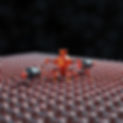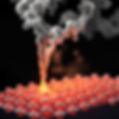

Feng Research Group
We Engineer Pores for Nanorobotics & Autonomy, Circularity & Sustainability, Critical Energy & Materials
Research Overview

Nanorobotics & Autonomy
We design precision-tunable porous materials that function as molecular-scale machines—forming the foundation for future nanorobotic systems. These systems are engineered for autonomous sensing, transport, and transformation of molecules at the nanoscale. Inspired by non-equilibrium dynamics in biological systems, our soft-matter platforms exhibit programmable, sequence-defined behavior akin to ribosomal synthesis.
We integrate AI-guided molecular design and quantum simulation tools to accelerate the discovery of responsive frameworks that operate in fluctuating chemical environments. These intelligent materials can adapt their behavior in real-time, enabling dynamic tasks such as selective molecular sorting, cooperative catalysis, or environmental monitoring within confined nanospaces.
Circularity & Sustainability
Our research tackles carbon circularity through the development of smart, multifunctional materials for carbon dioxide capture, conversion, and reuse. We use AI-driven materials informatics to identify and optimize porous frameworks and hybrid adsorbents capable of selectively extracting CO₂ from ultra-dilute sources such as ambient air or seawater.
These systems are enhanced by photochemical and electrochemical activation, converting captured carbon into fuels or value-added chemicals. We uncover new correlations between material structure, environmental dynamics, and capture performance and explore unprecedented control over carbon flows in closed-loop systems.


Critical Energy & Materials
Our group draws inspiration from biological systems to create materials that capture and utilize critical metals and minerals directly from aqueous environments. We focus on rare-earth and transition-metal porous materials (e.g., Yttrium, Lanthanides, Titanium, Zirconium) that operate through cooperative or switchable adsorption modes, targeting applications in energy, separations, and clean-tech materials.
We are investigating how rare-earth-containing frameworks might exhibit properties relevant to quantum materials—such as magnetic anisotropy, optical emission, or spin interactions—and how our experimental platforms can contribute foundational insights. Additionally, we are beginning to explore data-driven tools to guide synthesis and better understand binding selectivity and kinetics in complex media.
